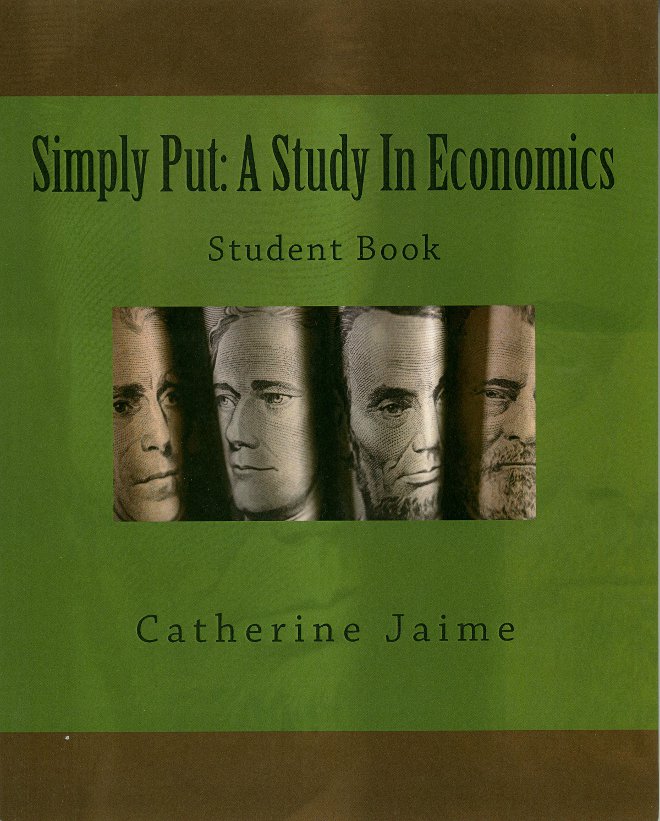Simply Put: A Study in Economics is a high school level economics text that presents views representative of the Austrian school of economics—basically a limited-government, free market approach.
The course has both a student book and a teacher key. The student book has 140 pages. The first 84 pages comprise the 36 lessons, so there are just a few pages per lesson. A number of appendices follow the lessons. The last section of the student book has review questions for each chapter plus mid-term and final exams.
While this can be a semester-long course, it really should be expanded with additional reading or activities. For starters, students should read the appendices included within the book. References to the appendices are within the lessons, so you will know when to use them. Two activity pages are included within the appendices—a word search puzzle and a matching activity.
Footnotes in the student book often have suggestions for articles and videos that can be accessed online. (Some footnotes refer students to www.Izzit.org, a very inexpensive membership service for educational videos.) Using these resources would help provide additional content.
Since chapter review questions are at the end of the book rather than immediately after each chapter, you can easily miss them. However, you should either discuss the questions together or have students write out their answers. This course should work particularly well for a group class because of the interesting discussions that should arise.
The teacher key has answers for only the mid-term and final exams. There are no answers for chapter reviews or for the two activity pages. Chapter review answers are contained within the chapter material, but parents or teachers need to have read that material to be able to evaluate student responses. The teacher key also includes an activity on the national budget that should be interesting as well as a “free trade” game. The game requires at least eight participants, so it won’t be practical in many situations.
The course is focused primarily on basic macro-economic principles such as the nature of money, inflation, and international trade, but it also addresses some micro-economics topics such as supply and demand, consumers’ reactions to price fluctuations, and the minimum wage. The course devotes a lot of attention to the interrelationships of government and economics. It deals with capitalism vs. socialism/communism, the U.S. Constitution’s references to economics, price fixing, rationing, government debt, and other topics that focus heavily on government actions that impact economics. This perspective makes the course much more interesting than standard economics courses, but it clearly presents a conservative, free-market viewpoint. Author Catherine Jaime frequently quotes nineteenth-century economist Frederick Bastiat, an influential writer who advocates these same views, as well as other prominent conservative economists.
Jaime communicates the ideas clearly to students with plenty of real-life applications and examples. Students will certainly have a much better understanding of the economics involved in many hot button issues such as the minimum wage, government deficit spending, and a government-controlled health care system when they have completed this course.
While the course could be improved by adding a complete answer key for all questions, the economics instruction is excellent. Even those who support a contrary economic viewpoint might want to use Simply Put as a foil against which to frame their own arguments for a more interventionist or Keynesian approach. Those who share Jaime’s conservative, free-market outlook might want to expand the course with articles or resources supporting contrasting ideas so that students consider the various viewpoints more fully.










